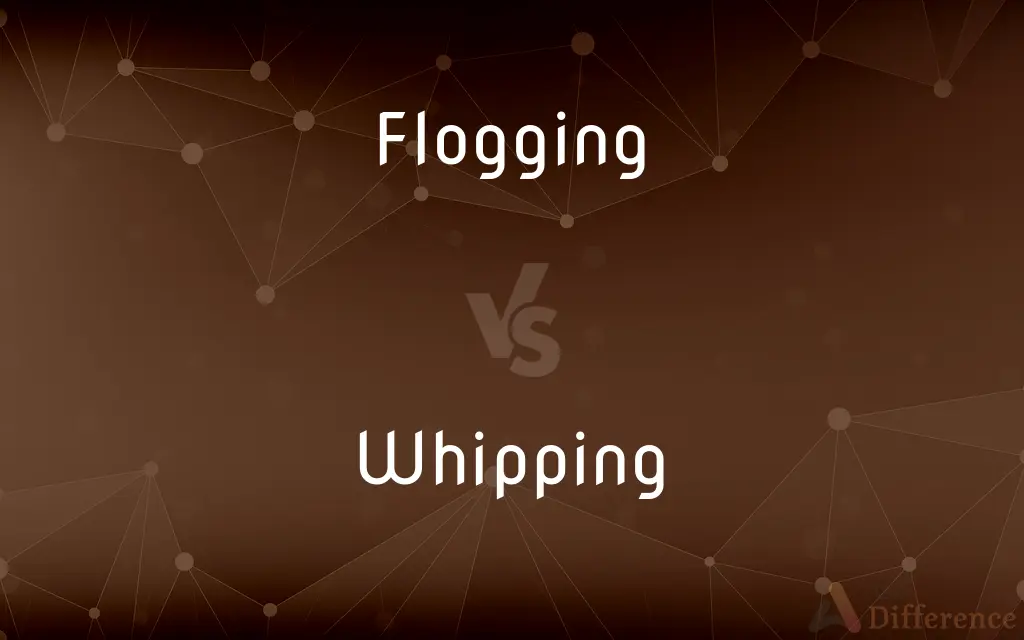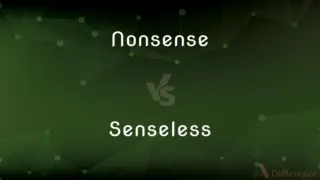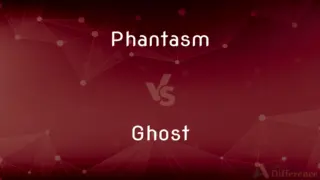Flogging vs. Whipping — What's the Difference?
By Urooj Arif & Fiza Rafique — Updated on April 6, 2024
Flogging involves punishment with a multi-tailed whip or lash, focusing on the severity and official capacity, while whipping uses a single-tail whip, often less formally regulated.

Difference Between Flogging and Whipping
Table of Contents
ADVERTISEMENT
Key Differences
Flogging is a form of corporal punishment where the individual is hit with a multi-tailed whip or lash, historically used for severe offences and carried out in a formal, often public, setting. Whipping, on the other hand, generally involves a single-tail whip and can be used both for punishment and in other contexts, such as discipline within households or as part of BDSM practices.
The origins of flogging are deeply rooted in military and judicial history, serving as a method to enforce discipline and penalize offenders within these frameworks. Whereas whipping has a broader historical application, extending from domestic discipline to slave management, reflecting a wider range of use in both formal and informal contexts.
Flogging, by its nature, often involves a specific number of strikes as dictated by law or military regulation, highlighting its role in official punitive measures. Whipping, while it can be similarly regulated, is more variable in its application, with the number of strikes and the context of its use being less consistently defined.
The instruments used in flogging typically have multiple tails, sometimes with knots or barbs to inflict greater pain, indicating its purpose for more severe punishment. In contrast, whipping uses instruments ranging from simple leather whips to more complex designs intended for specific sensations, illustrating the variation in its purpose and intensity.
Flogging is often associated with a formal procedure, including specific protocols regarding the execution and conditions under which it is carried out, emphasizing its role within institutional settings. Whipping, while it can occur in similar formal settings, is also found in personal or less formal environments, demonstrating its adaptability to different contexts.
ADVERTISEMENT
Comparison Chart
Nstrument
Multi-tailed whip or lash, often with knots or barbs.
Single-tail whip, ranging from simple to complex designs.
Context
Primarily used for severe punishment in military and judicial settings.
Used in a broader range of contexts, including discipline and BDSM.
Formality
Highly regulated, with specific protocols for execution.
Less consistently regulated, adaptable to formal and informal uses.
Severity
Generally considered more severe, with potential for more intense pain.
Varies widely, from mild to severe, depending on the context.
Historical Usage
Rooted in military and judicial history for discipline and punishment.
Has a wider historical application, including domestic discipline.
Compare with Definitions
Flogging
Can result in severe physical harm.
The severe flogging left the man with lasting injuries.
Whipping
Can be both punitive and non-punitive.
The jockey used his whip to encourage the horse.
Flogging
Often carried out in a public setting.
The flogging was conducted in the town square for all to see.
Whipping
Less formal than flogging.
His father's whipping was swift and not bound by any formal procedure.
Flogging
A punishment involving beating with a multi-tailed lash.
The sailor faced flogging for desertion.
Whipping
Can vary from mild to severe.
The whipping he received was mild compared to other punishments.
Flogging
Historically used for discipline in military settings.
Flogging was a common form of discipline aboard ships.
Whipping
Used in various contexts, including BDSM.
Whipping is a common practice in BDSM activities.
Flogging
Associated with formal and official punishment.
The court sentenced him to flogging for his crimes.
Whipping
A form of punishment or discipline using a single-tail whip.
Whipping was used as a quick form of discipline.
Flogging
To beat severely with a whip or rod.
Whipping
The act of one that whips.
Flogging
(Informal) To publicize aggressively
Flogging a new book.
Whipping
A thrashing administered especially as punishment.
Flogging
Infliction of punishment by dealing blows or whipping.
What lawbreakers like that need is a good flogging. Do that and watch the crime rate plummet.
Whipping
Material, such as cord or thread, used to lash or bind parts.
Flogging
Present participle of flog
Whipping
(countable) The punishment of being whipped.
Flogging
Beating with a whip or strap or rope as a form of punishment
Whipping
(countable) A heavy defeat; a thrashing.
Whipping
(uncountable) A cooking technique in which air is incorporated into cream etc.
Whipping
(countable) A cord or thread used to lash or bind something.
Whipping
The lashing of the end of a rope. (FM 55-501).
Whipping
(bookbinding) The sewing of the edges of single leaves in sections by overcasting the thread.
Whipping
Present participle of whip
Whipping
Beating with a whip or strap or rope as a form of punishment
Whipping
A sound defeat
Whipping
A stitch passing over an edge diagonally
Whipping
The act of overcoming or outdoing
Whipping
Smart and fashionable;
Snappy conversation
Some sharp and whipping lines
Common Curiosities
What is flogging?
Flogging is a form of corporal punishment where an individual is beaten with a multi-tailed whip or lash, often in a formal and regulated context.
What is whipping?
Whipping involves hitting someone with a single-tail whip, which can vary widely in its application, from punishment to discipline or even as part of BDSM practices.
Can flogging and whipping cause long-term damage?
Yes, both can cause long-term physical and psychological damage, depending on the severity and circumstances of their use.
How does flogging differ from whipping?
Flogging typically uses a multi-tailed instrument and is more formal and severe, often associated with military or judicial punishment, while whipping uses a single-tail whip and has a broader range of applications.
Are flogging and whipping still used today?
While largely abolished in many parts of the world, flogging and whipping are still used in some countries and contexts, including as part of legal or disciplinary measures.
Is flogging legal?
Flogging's legality varies by jurisdiction, remaining legal in some countries for certain offenses.
Has the use of flogging and whipping changed over time?
Yes, the use and perception of both practices have evolved, with a significant decline in their use as formal punishments in many societies.
What instruments are used for flogging?
Instruments for flogging often include whips with multiple tails, sometimes featuring knots or barbs to increase pain.
In what contexts is whipping used?
Whipping is used in disciplinary contexts, within BDSM practices, and as a form of punishment in some legal systems.
What are the psychological effects of flogging and whipping?
Both practices can have long-lasting psychological effects, including trauma and PTSD.
Is whipping considered more humane than flogging?
The perceived humanity of whipping versus flogging depends on the context and severity, though flogging, with its formalized and often public nature, is generally seen as more severe.
What instruments are used for whipping?
Whipping typically involves simpler, single-tail whips, but can include various designs intended for specific effects.
Can flogging be fatal?
In extreme cases and depending on the method and severity, flogging can be fatal.
Are there alternatives to flogging and whipping for discipline?
Many jurisdictions and organizations now advocate for non-physical forms of discipline and punishment, considering them more humane and effective.
What historical purposes did flogging serve?
Historically, flogging was used for discipline within the military and as a judicial punishment for crimes.
Share Your Discovery

Previous Comparison
Nonsense vs. Senseless
Next Comparison
Phantasm vs. GhostAuthor Spotlight
Written by
Urooj ArifUrooj is a skilled content writer at Ask Difference, known for her exceptional ability to simplify complex topics into engaging and informative content. With a passion for research and a flair for clear, concise writing, she consistently delivers articles that resonate with our diverse audience.
Co-written by
Fiza RafiqueFiza Rafique is a skilled content writer at AskDifference.com, where she meticulously refines and enhances written pieces. Drawing from her vast editorial expertise, Fiza ensures clarity, accuracy, and precision in every article. Passionate about language, she continually seeks to elevate the quality of content for readers worldwide.














































